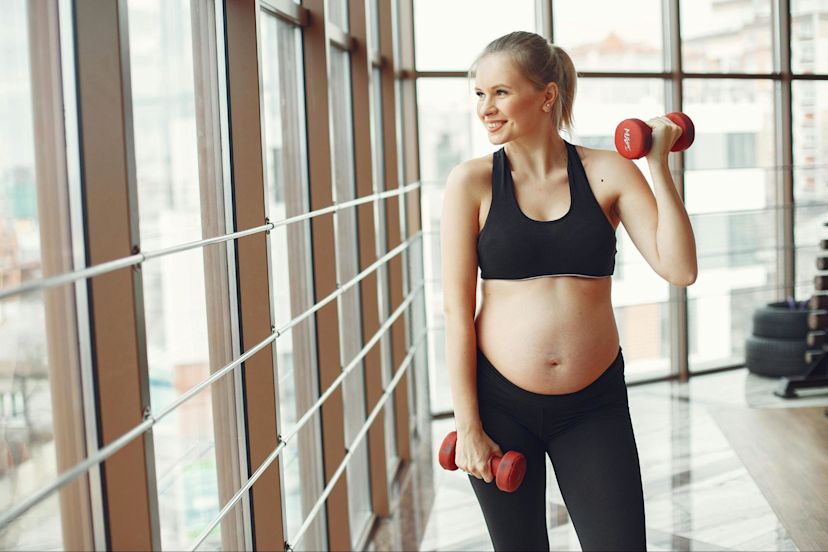The 15 Best Strength Training Exercises for Cyclists

There are many misconceptions out there about strength training for cyclists. It was not so long ago that endurance athletes such as cyclists thought that strength training was merely for sprint-based sports. Instead, the focus was simply on training as much as possible on the bike, with the belief that strength training would make you bulky and ultimately slow you down.
However, the tables have turned! Research is proving for both men and women cyclists that strength training is hugely beneficial to your overall power output, biomechanical efficiency, and endurance, in addition to decreasing fatigue levels and reducing the likelihood of injury. Ultimately, strength training can enhance a cyclists’ overall performance, and is certainly worth looking into if you’re looking to level up your rides.
Let’s take a closer look at how strength training is beneficial for cycling and the best types of strength training exercises for cyclists.
The benefits of strength training for cyclists
Strength training geared toward improving power and strength through lower reps and heavier weights is undeniably beneficial for cyclists. Here’s why:
1. Strength training improves peak power and performance
Strength training leads to an increase in lean muscle mass, which is crucial for generating more power on your bike. More muscle leads to an improved rate of force development and maximum force, resulting in faster acceleration and higher output (especially during climbs and sprints).
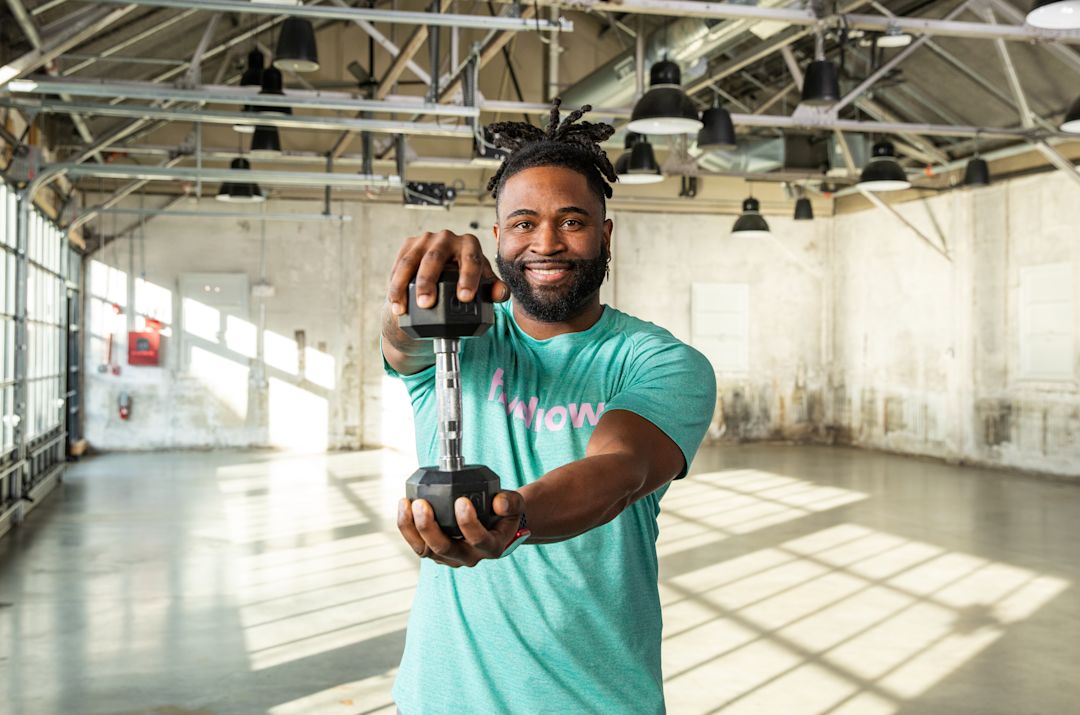
Explore Hydrow's library of strength training workouts.
2. Strength training improves lean body mass
Contrary to popular belief, building for overall muscle mass, as seen in bodybuilders, is based on the number of reps completed. Heavier weights and lower reps do not build mass—rather, they increase your lean muscle mass. This will allow for power gains without the less-than-desirable bulk.
3. Strength training improves neuromuscular recruitment
Lifting heavy weights trains the nerves in your muscles to fire more frequently. These nerves stimulate more motor units, which in turn recruit more muscle fibers. The result? More power exerted upon effort.
4. Strength training reduces muscle fatigue
Simply put, stronger muscles can help cyclists maintain power for longer periods of time, reducing fatigue.
5. Strength training improves anaerobic capacity
A cyclists’ ability to sprint, sprint repeatedly, and then recover from sprints can be improved with strength training as a result of muscle recruitment and improving the load each muscle fiber can withstand. Overloading your muscles with weightlifting recruits your fast-twitch muscle fibers as opposed to the slow-twitch fibers that are predominantly recruited in endurance cycling.
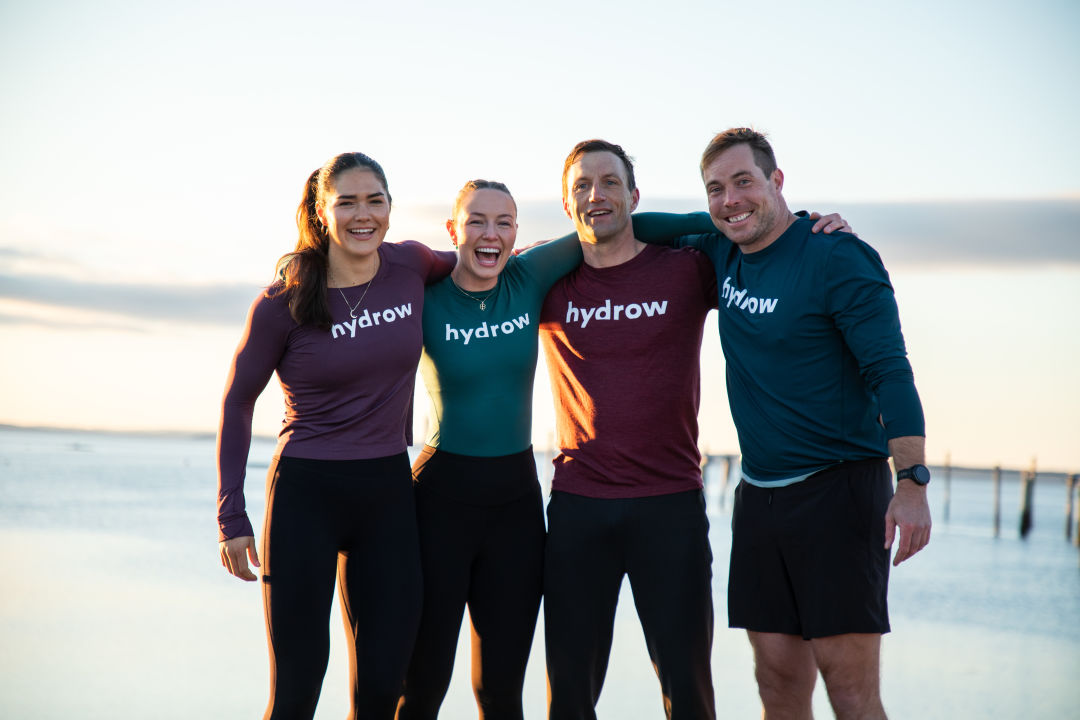
Explore Hydrow’s library of 5,000+ rowing, circuit training, yoga, Pilates, and mobility workouts.
6. Strength training can help prevent injuries
Strength training exercises that target both primary and stabilizing muscles can help correct any imbalances, improve joint integrity, and reduce the risk of overuse injuries.
7. Strength training results in better cycling mechanics
Gaining strength in both primary and accessory muscles of the cycling motion can lead to more efficient riding position and help improve the recruitment of muscles used.
8. Strength training offers overall health benefits
Because cycling is a non-weight-bearing exercise, cyclists are prone to losing bone mass if they aren’t participating in other forms of exercise that increase bone density, such as strength training.
The 15 best strength training exercises for cyclists
Overall, the best type of strength training for cyclists will involve both the muscles that cyclists utilize most in the pedaling mechanics, such as the quadriceps, hamstrings, glutes, hip flexors, calves, and stabilizing muscles.
With that in mind, here are the 15 best strength training exercises for cyclists, along with which muscles they work, and step-by-step instructions for how to do them:
Let’s dive in!
Working the big movers
1. Squats
Because your quads are one of your prime movers as you cycle, any form of squats will be beneficial. When you feel comfortable with the movement, feel free to add dumbbells or a bar to up your intensity!
How to do squats:
Stand tall with feet shoulder-width apart.
Brace your core and lower yourself like you are sitting in a chair by hinging at hips, keeping your chest up.
Go as low as your mobility allows, aiming for at least your thighs parallel to the ground.
Reverse the movement by pushing through your heels and returning to the starting position.
2. Goblet squats
Goblet squats benefit mobility within the hips and ankle joint, which can lead to more efficient pedaling mechanics. Additionally, holding onto a dumbbell or kettlebell (as opposed to a bar) encourages working through a full range of motion and increased depth.
How to do goblet squats:
Use the same mechanics as a basic squat but hold a dumbbell or kettlebell vertically against your chest. Both hands should be under the top of the weight (like a big goblet!).
As you start to move down, keep the weight close to your chest and your elbows down.
The depth of the movement aims to have your elbow lightly touch the inside of your knees while keeping your back straight
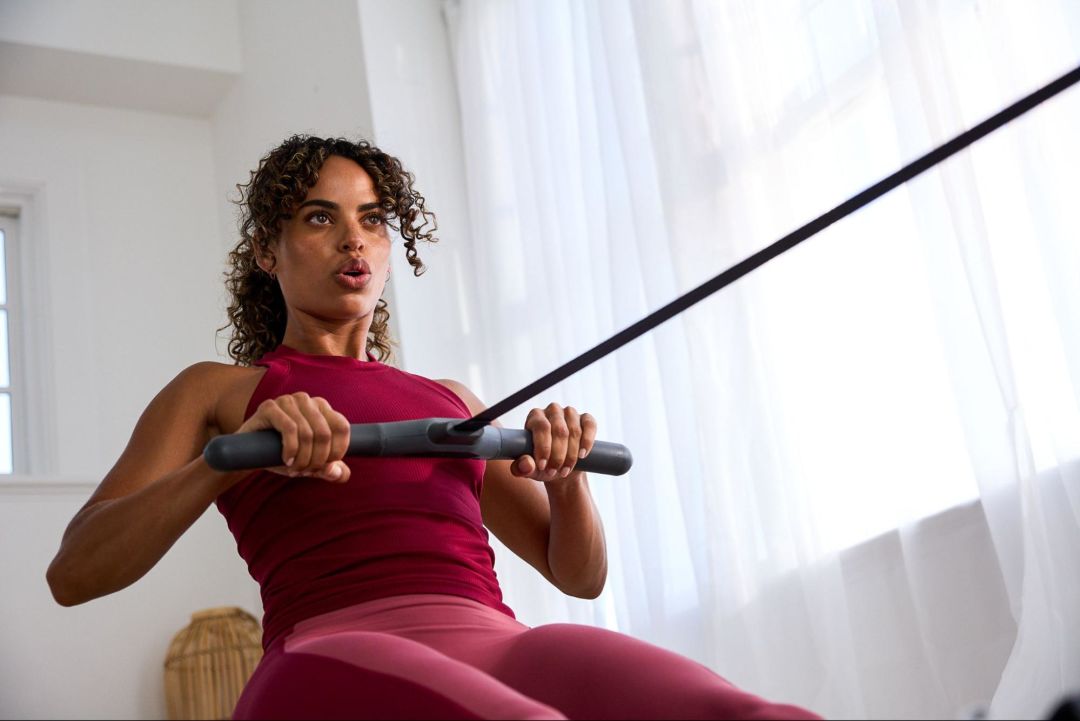
Efficiency for the win.
Work 86% of your muscles in just 20 minutes of rowing with Hydrow.
3. Hamsting curls (machine)
This exercise isolates the back of the leg (your hamstrings), helping you generate power and pedal more efficiently.
How to do hamstring curls:
Set up your machine so the leg pad sits just above your heels.
Lie face down and grip the handles on the side.
Engage your core, slowly curling your legs towards your glutes.
Pause at the top before returning to your starting position.
Keep your hips in contact with the bench throughout the entire movement.
If you don’t have access to a machine for hamstring curls, you can also use a ball or a towel at home.
4. Deadlift
Deadlifts are one of the best full-body strength exercises you can do, as they engage the posterior chain, hamstrings, glutes, core, back, and grip, with some involvement of the quads as well.
How to do a deadlift:
Stand with your feet hip-width apart, hinge at your hips, and bend your knees to lower your torso to grab the bar.
Grab the bar with your hands just outside your knees—either with both palms facing you or one palm facing you and the other facing away.
Keep your back flat, chest up, and shoulder blades pulled back.
With your hips higher than your knees and your eyes looking slightly ahead, brace your core and drive through your heels to raise the bar.
Keep the bar close to your body—almost grazing your shins and thighs—as you unhinge and stand tall.
Reverse the movement by pushing your hips back first, then bending your knees to lower the bar in a controlled way.
Single-leg work to replicate pedaling and address potential imbalances of each leg
1. Lunges
Lunges are a great exercise for your legs and glutes. They also challenge your stability and balance. When you feel comfortable with the lunge movement, you can level up by holding dumbbells in each hand by your side.
How to do lunges:
Stand tall with your feet hip-width apart.
Engage your core and keep your chest up as you take one big step forward with one leg.
As your front foot plants, shift your weight forward.
Bend both knees to lower your body straight down until your front thigh is parallel to the ground and your back knee hovers just above the floor, keeping your torso upright.
Drive through your front heel to push yourself back to the starting position.
Repeat on the other leg.
2. Step-up to reverse lunge
This is a multi-step exercise that can improve your coordination, stability, and balance on your bike, making it easier to navigate different terrain or maintain control during intense rides. When you’re comfortable with this movement, you can hold dumbbells in each hand by your side.
How to do a step-up to reverse lunge:
Stand facing a sturdy bench, box, or step that’s about knee height.
Step your right foot up onto the box, keep your chest up, and drive through your heel to lift yourself up, driving your left knee up toward your chest (you can add power by hopping up).
Step your left foot back down to the floor and bend both knees to 90 degrees.
Repeat for all reps, then switch legs.

Did you know?
Over 90% of Hydrow members are still active one year later.
3. Single-leg Romanian deadlifts
Single-leg Romanian deadlifts (SLRDs) are especially beneficial for cyclists because they target the posterior chain—the muscles along the back of your body—which plays a key role in cycling performance, injury prevention, and overall balance.
How to do single-leg Romanian deadlifts:
Stand tall with your feet together, holding a weight.
Shift your weight onto your right leg, with a soft bend in the knee and your hips square.
Begin the movement by hinging at the hips, pushing your butt straight back.
At the same time, let your left leg extend straight back for balance.
Keeping your core tight and your back straight, lower the weight down in front of your standing leg until you feel a stretch in your hamstring or until your torso is parallel to the ground.
Squeeze your glute and drive through the heel of your standing leg to bring your torso upright.
Your back leg should simultaneously be brought forward to the starting position.
Involving the core while making leg and arm movements
A basic plank targets your shoulders, abdominal muscles, glutes, and lower back. Additional arm or leg movement results in more muscle engagement and greater difficulty. While cycling relies predominantly on the lower body, it is also important to maintain a solid posture and handling of the bike during long or intense climbs. This relies on upper-body strength to help stay balanced and stable, as well as reduce fatigue.
These exercises will help with this upper-body strength and core stability.
1. Planks
Planks are great for cyclists because they help build a strong core, which is essential for overall cycling performance and injury prevention.
How to do a plank:
Start on all fours (your hands and knees).
Lower onto your forearms, making sure your elbows are directly under your shoulders.
Step your feet back one at a time so your body forms a straight line from your head to your heels.
Keep your head neutral, gaze at the floor, press your forearms into the floor, retract your shoulders back, pull your belly button toward your spine, squeeze your glutes, and keep your legs straight and engaged.
2. Plank with alternating leg lift
This exercise is great for cyclists because it targets several muscle groups that are essential for cycling performance, including the core, glutes, and hip flexors.
How to do a plank with alternating leg lift:
Start in the plank position noted above.
Squeeze your glute and lift one leg a few inches.
Maintain square hips, a straight back, and a straight leg by lifting from your glute, not your lower back.
Hold for 2 seconds, then lower your leg with control.
Repeat on the other side and continue alternating legs.
3. Side plank with hip abduction
This exercise recruits your abs, including your obliques, and hip abductors.
How to do a side plank with hip abduction:
Lie on your side, with your elbow directly under your shoulder, and your legs extended and stacked on top of each other.
Lift your hips so your body forms a straight line from your head to your heels.
Engage your core and glutes to keep your hips high and steady.
Lift your top leg slowly, leading with the heel and keeping it straight. Raise your leg a few inches from your bottom foot, hold at the top, and then lower with control.
Repeat for reps, then switch sides.
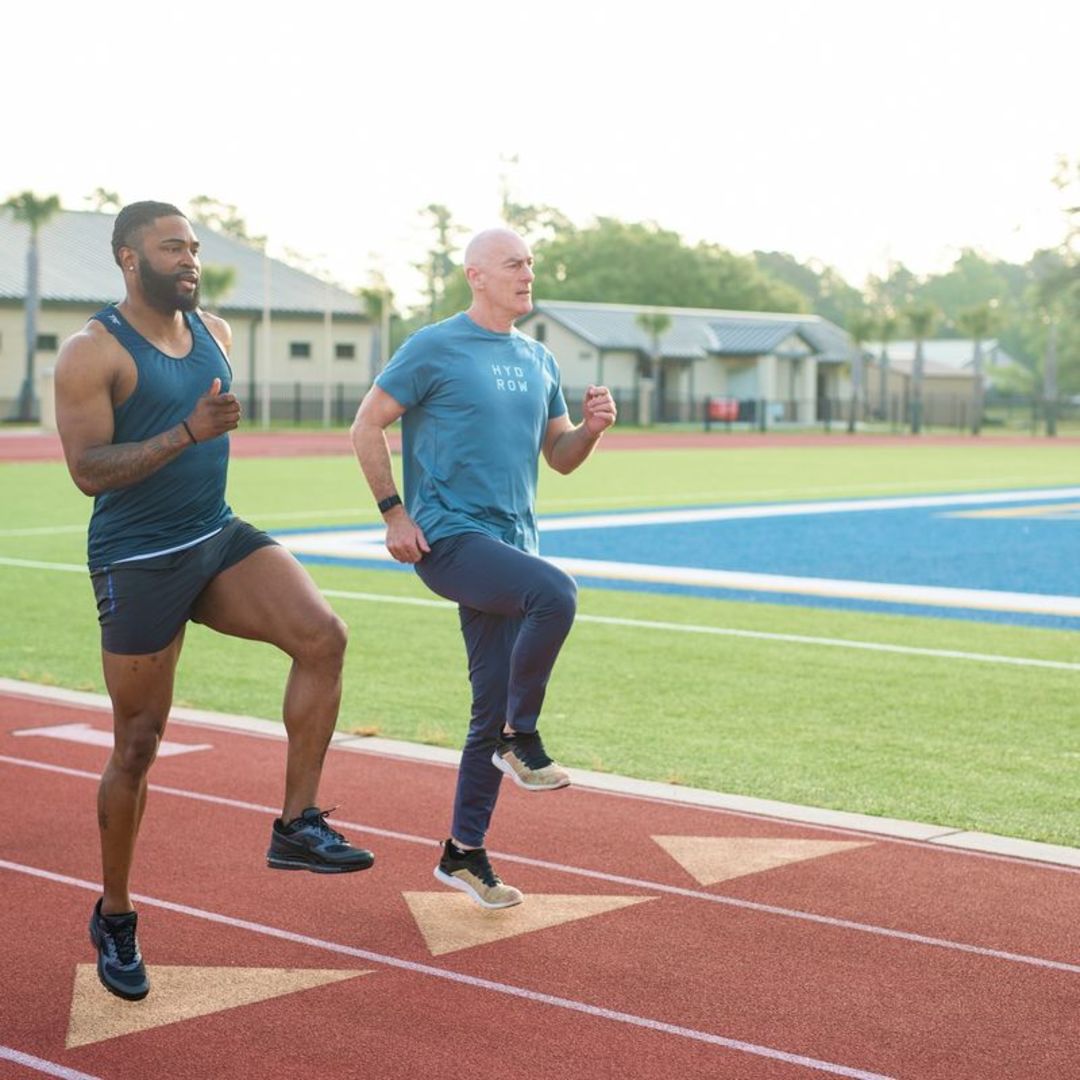
What’s your workout style?
Take our quiz and get a customized 14-day training program.
4. Renegade row
How to do a renegade row:
Get into a high plank position, with your hands gripping dumbbells directly under your shoulders and your feet slightly wider than shoulder width for better balance.
Keep a straight line from your head to your heels, engaging your core and glutes.
Row one dumbbell up toward your ribcage, bending your elbow and lifting it straight back toward the ceiling, keeping it close to your body.
Lower the dumbbell slowly back to the floor, then repeat on the other side.
Keep your hips level throughout the movement.
Continue to alternate to complete all reps.
Upper-body pushing and pulling exercises
While your lower body is supported by your bike’s seat, your arms, shoulders, and back must support your torso while leaning on the handlebars of your bike. To prevent unnecessary muscle fatigue, try these exercises:
1. Chest press
Think of yourself as flipped over on the bike—similar to pressing on the handlebars, you will work similar muscles, including your chest, shoulder, and triceps.
How to do a chest press:
Lie down on a flat bench, with your feet flat on the floor.
Extend your arms fully above your chest, palms facing forward and wrists straight, holding a dumbbell in each hand.
Slowly lower the dumbbells toward your chest, bending your elbows at a 90-degree angle and maintaining your wrists above your elbows.
Push the dumbbells back to the starting position, squeezing your chest muscles.
2. Front shoulder raises
This exercise primarily works the deltoids, but also the chest and traps that help support posture.
How to do front shoulder raises:
Stand shoulder-width apart, holding dumbbells in each hand, palms facing your legs.
Keep your arm straight and slowly lift one arm directly in front of you until it reaches shoulder height.
Slowly lower your arm back to the starting position, then alternate arms to complete all reps.
3. Back extensions
With back extensions, the focus is on the erector spinae muscles, which help keep the back straight.
How to do back extensions:
Use a 45-degree angle extension bench.
Set up so the thigh pad is below your waist and you can fully bend over.
Mount the bench, placing your heels onto the heel pad/plate to hold yourself into position.
Keep your legs straight and cross your arms over your chest (you can hold weight once comfortable with the movement).
Bend at the waist to slowly lower your torso, bending as far as possible before returning to the starting position.
4. Reverse curls
This strength exercise works both the biceps and forearm flexors, which will help with grip strength and stability.
How to do reverse curls:
Stand hip-width apart, holding a barbell or dumbbells with an overhand grip (palms facing your legs).
Curl the weight toward your shoulders, keeping your elbows tucked into your body during the movement.
Squeeze at the top, then slowly lower the weight back down.
How to incorporate strength training into a cycling training plan
Typically, cycling training plans involve different phases, often referred to as “training periodization.” This typically revolves around an end goal, competition, or race. When introducing a strength training component to your plan, it’s important to consider which phase you’re currently in.
Generally, during the cycling off-season is a great time to build a base with general strength, then transition into more specific exercises focused on power and explosive gains. Try to lift heavier for 4–6 reps 2–3 times a week. However, the number of times you do strength training per week really depends on your goals.
Continue to strength training during the season, transitioning to 1–2 times a week and focusing on increasing your reps and lifting moderate weight to maintain the strength gains you made in the off-season while focusing more on race preparation. Ultimately, the priority shifts to strength maintenance, being race-ready, and giving yourself enough time to recover between workouts.
During a taper for your main competition, eliminating strength training altogether is recommended.
Other important considerations when including strength training into your training schedule include:
If possible, try to separate strength training and cycling workouts.
Avoid lifting heavy weights before or after higher-intensity cycling sessions.
If combining cycling and strength training in the same session, prioritize your main goal. For example, if gaining strength is of higher priority, lift weights first, then complete your cardio workout (or vice versa).
Allow for optimum recovery from strength sessions with approximately 48 hours rest between working the same targeted muscles in a session.
Listen to your body! If you experience lingering soreness from a lift session, add an additional day of recovery.
Consider your fitness, intensity, and experience with lifting weights before putting a strength program together. Like any skill, it takes time to learn these exercises.
Try strength training with Hydrow today!
Strength training is a game-changer for cyclists, and those who are serious about stepping up their performance and decreasing the odds of injury should be adding in strength sessions to their workout plan. There are undeniable benefits if integrated and completed in the appropriate manner.
Looking for a way to incorporate more strength training into your exercise routine?
Hydrow offers guided strength training workouts for every fitness level, all led by world-class Athletes who coach you through each movement and help you stay consistent. Additionally, our rowing workouts target 86% of your muscles with every stroke, delivering full-body training and real results.
Explore Hydrow’s strength workouts and see how far you can go.
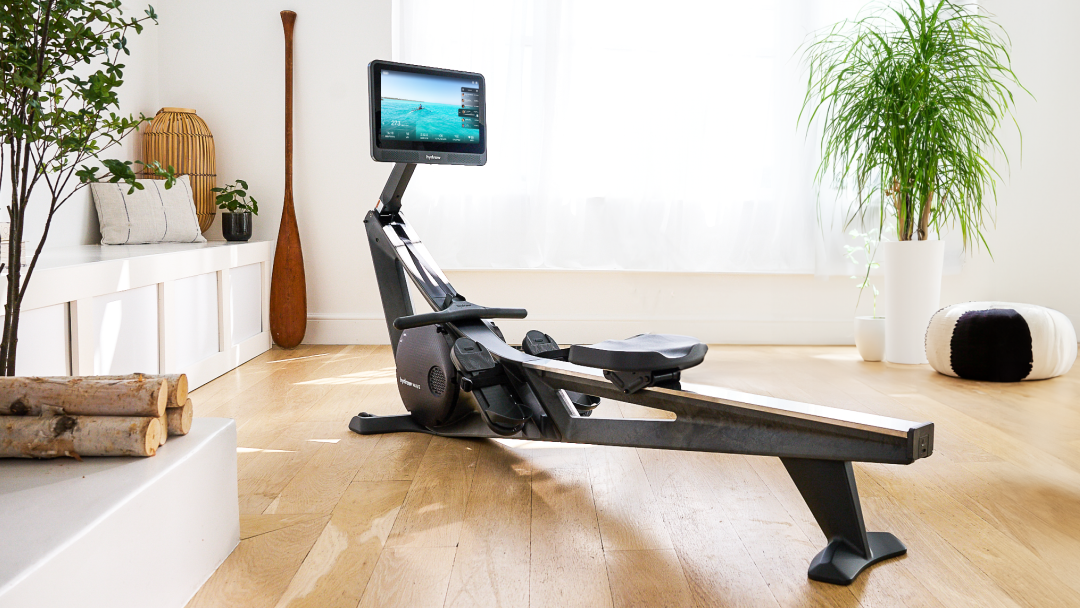
Real strength keeps moving
Learn how working out with Hydrow can help support a fuller, more active life.











